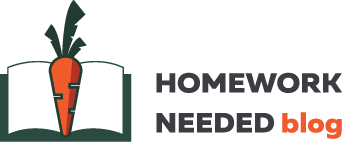
Any scientific article, dissertation or even academic essay are written on a serious scientific base. Hence, various academic sources are used, and information from them is included, discussed, disputed, refuted or simply referred to. In big academic texts, a literature review is an obligatory part, however, in smaller genres, a paragraph at the beginning is also devoted to the review of sources. This part formulates and academic culture of the researcher.
Context
Every author (either beginner or an advanced scientist) is a part of an academic community, dealing with the same problem. Discovering an academic base is reading the works of classical scientists. Having defined a specific topic, a scientist is supposed to check the works of other authors on this and related topic, analyze how the topic refers to the research carried before by others. Dissertations and monographs need to be reviewed not to invent something that has already been invented.
Sources
The main source of the existing scientific information is academic journals. Thus, a beginner scientists need to master the skill of scientific search, know main professional journals, know how to find their electronic versions, use library catalogs, electronic databases. The modern era simplifies the search of scientific sources with the help of existing electronic libraries, and ability to search with key words, last names of authors, kinds and titles of publishers, years of publication, etc.
Types of Resources
Here is your checklist of types of sources to review.
- Books: scientific monographs course books, brochures;
- Periodicals: scientific journals, sets of scientific articles;
- Documents: standards, normative acts, manuals, sets of documents, constitutions;
- Encyclopedias, dictionaries, and reference books;
- Reports about research work;
- Patents and certificates of authority;
- Informative editions: analytical reviews, exhibition prospects, etc.
- Translations of scientific sources written by the foreign researchers and original editions (if you are good at reading in the foreign language);
- Dissertations and dissertation briefs.
How to Work with Sources?

Review the texts that are assigned by your professor or chosen based on your scientific problem. Make annotations and notes, systematize the discovered ideas, and do not forget to add your comments to them (from the perspective of your study). Try to review the works only from the point of view of your problem, but not all possible directions of which are at least somehow connected to what you are interested in. All the essential works that have the relation to what you research on are to be read and critically analyzed.
Authors who do not have a clear understanding of the purpose, tasks and problems of his/her research is like a collector who collects everything. If in addition such a writer does not have a well-developed skill of primary information processing, he/she will drown in tons of collected material.
Making Notes
The simplest way to work with resources is making notes. Conspectus is a set of notes limited by inverted commas, with the link to the original source and indication of the page numbers, as well as the main ideas from the selected source written the way the creator of a conspectus summarizes them. Making a conspectus of the quotes is necessary, because they come in handy when writing scientific papers with direct quotations. Accuracy is the key feature here to avoid any misinterpretation.
- There may be various reasons for misinterpretation. Firstly, one may take a quote out of its context, making it deliver a completely different message. Secondly, the writer may remove some words and leave others that better suit his/her needs. Lastly, the side ideas may be taken for the main ones.
- One should be extremely accurate with the secondary quoting, because the risk of modifications grows.
- It is a must to separate the content expressed in one’s own words from the personal interpretation (comments, disagreement, critics, etc.)
Annotations
Annotation is a half-page to one-page long text expressing the main ideas of the annotated work in the exact sequence they appear in the text. It is possible to expand the annotation with quotes, but just retelling the main points may be enough as well.
Paraphrasing
Paraphrasing is telling the same idea in your words. It is different from annotation, because it does not necessarily compress information. All you need is to express the sense of the full work or its part.
Why may paraphrasing be useful?
- For the better understanding and remembering of the text. You process it with your brain, and when you look into the paraphrased text, you will remind quicker.
- If you are writing for the wide audience, and the source you are using is for the advanced scientists, you may need to adapt the text to make it clearer for your target audience.
How to paraphrase?
- Read the material to be paraphrased. Make sure you understand what you have read.
- Find the meaning of the complex words and phrases, check the dictionaries and encyclopedias, find synonyms and try to restructure the phrases or paragraphs.
- Put the text aside and write what you have read in your own words.
- Review the text to make sure you have paraphrased it, but not changed its sense and have not missed any important information.
- Paraphrased text needs to be coherent and logical. Edit it.
- Finally, add a correct citation of the original work you have been using.
Plan of the Work on a Literature Review

At the very beginning you should write a preamble which should include:
- Definition of the main topic, question or field of interest, depiction of the context of the review.
- Determination of the general tendencies which have been included into publications on the required topic, as well as conflicts that exist within the scientific problem, or blank pages that are yet to be filled.
- Formulation of the main problem (aspect, point of view) for the review; explanation of the criteria of the analysis and comparison of scientific literature; clarification on how to structure the review; evaluation of the significance of some sources which will be or will not be included to the review.
In the main part of the literature review, you are supposed to:
- Group sources of different type based on certain features;
- Summarize the separate sources in a more or less detailed manner based on their significance to your particular study;
- Write the introductory phrases and create the linking structures at the beginning and the end of paragraphs to organize the logics of your review. Add the organizing phrases, such as “therefore,” “nevertheless,” “despite.” You remember how important logical organization is from the previous text, don’t you?
The ending of the part should include:
- Summary of the significance of the main sources covered to the field of study. Do not change the focus of the study;
- Evaluation of the state of things: how well the issue is covered, showing the blank pages and perspective for the future studies;
- Make a general conclusion showing the links of the ideas covered in the sources with the wide field of investigation you are interested in.

